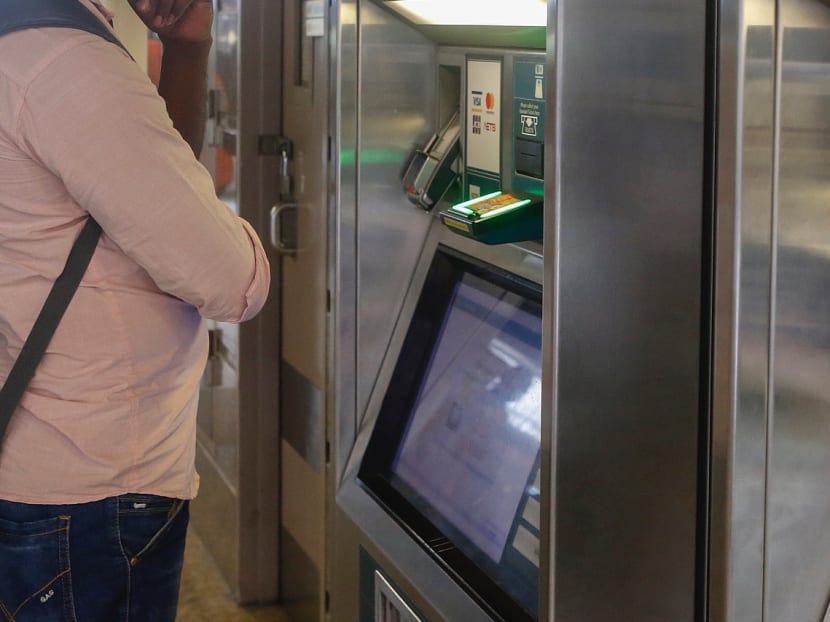Bus, train fare hikes: Good move to dampen Covid-19 impact in formula but bigger problems lie ahead, analysts say
SINGAPORE — A decision by the Public Transport Council (PTC) to not pass on the financial impact of low ridership on buses and MRT trains to commuters was a necessary move. This is because the existing formula for fare calculations is not able to account for a black swan or surprise event such as the Covid-19 pandemic, three public transport analysts said.
- Transport analysts break down why the Public Transport Council had to deviate from its fare review formula
- The deviation allowed fares to go up by three to four cents, instead of 60 cents
- The formula’s network capacity factor for 11 months in 2020 was excluded when there was a severe fall in ridership
- This deviation threw up more questions about cost recovery and the sustainability of the public transport system
- With the fare formula due for a review in 2022, finding the right balance will be a tricky affair, analysts said
SINGAPORE — A decision by the Public Transport Council (PTC) to not pass on the financial impact of low ridership on buses and MRT trains to commuters was a necessary move. This is because the existing formula for fare calculations is not able to account for a black swan or surprise event such as the Covid-19 pandemic, three public transport analysts said.
They were responding to the three- to four-cent increase in bus and train fares for adults from Dec 26, which the PTC announced on Wednesday (Nov 3).
Because the coronavirus crisis caused a severe fall in bus and train ridership from February to December last year, the council decided that it would exclude the network capacity factor (NCF) in those months for its calculations.
Were it not for this, fares would have gone up by 51.5 per cent, or 60 cents, instead of the 2.2 per cent increase that will kick in at the end of the year.
However, the PTC’s decision to deviate from the fare formula also underscores the challenge of adjusting public transport fares to a level that is fair both to commuters and taxholders, while ensuring that buses and trains remain financially sustainable, public transport experts speaking to TODAY said.
Transport analyst Terence Fan from the Singapore Management University said: “Even if you go back to before the pandemic, there was still a big gap between the total cost of public transport and the revenue from fares, and it was not clear how these costs would be recovered.”
Associate Professor Michael Li from Nanyang Technological University, a transport researcher, said that the pandemic has introduced even more uncertainties and variables to public transport, which will impact how fares are determined in future.
Today, the Government heavily subsidises the public transport industry S$2 billion yearly, translating to a subsidy of more than S$1 for every journey taken on public transport.
The current fare formula is valid until next year, when a review is due to take place.
WHAT THE NETWORK CAPACITY FACTOR IS
Before 2018, the formula for fare review takes into account items that could result in higher operating costs for public transport operators such as changes in consumer prices, wages, and the costs of electricity and diesel.
An increase in any of these should lead to an increase in fares, since it would cost more to operate train and bus services.
At the time, transport authorities looked to aggressively expand the capacity of Singapore’s public transport network.
New train lines were planned and were being constructed, bus frequencies went up, and so did train frequencies with improvements to the signalling systems of several MRT lines.
It also took some time for commuters to adjust to the new train and bus routes, which is why it is normal for new train lines to be empty in the first 18 months of operation, making for a pleasant riding experience, Assoc Prof Li said.
Transport economist Walter Theseira from the Singapore University of Social Sciences said: “It is the nature of public transport that increasing capacity means a better public transport experience, but there was nothing in the fare formula that accounted for this.”
So, the PTC decided to introduce the NCF to account for the increase in capacity as part of the fare formula from 2018 to 2022.
This would also reflect the recurrent operating costs due to capacity adjustments, such as running more trains and buses over longer distances for less crowded and more convenient public transport rides.
If network capacity exceeds ridership, the NCF goes up since it implies a more comfortable ride for the commuter, causing an upward pressure on fare prices.
On the other hand, if ridership far outweighed capacity, implying overcrowding, then the NCF falls or becomes negative.
Dr Fan said: “Singapore’s NCF is unique in the world because the pace of change in infrastructure development in Singapore is unique. There are few places in the world where people experience such a big growth in public transit systems, and the NCF was a way to account for that.”
THE BLACK SWAN EVENT
In 2020 though, everything went out of the window, the experts said.
The emergence of a new and highly infectious coronavirus quickly led to a semi-lockdown and other restrictive measures here, which severely affected the demand for public transport.
At the same time, the Government needed to ensure that public transport services were still able to continue, though it did make some reductions to the frequency of buses and trains at the time.
The net effect of this was that capacity far outpaced ridership, which seemed to imply a better ridership experience. In reality, this was not a genuine increase in transport capacity.
Assoc Prof Theseira, who was a former Nominated Member of Parliament, said: “The NCF is meant to track long-term evolution in a public transport system. It really doesn't do well with these short-term gyrations in ridership.”
Dr Fan said that if the NCF is accounted for during the pandemic, it will create a problem of rising fares for commuters at a difficult time for all.
“It's also not fair for these people who ride on public transport because they don't have the luxury of being able to work from home. (Going by the NCF formula,) they would have to pay for higher fares because they were experiencing such comfortable rides in empty train cars and empty buses,” he added.
Therefore, it was the right decision for the PTC to ignore the NCF during this period, they said.
WHAT’S NEXT FOR THE FARE FORMULA
The problem with not adhering to the model, however, is its impact on the public transport operators, which are privatised businesses that rely on fare revenue through commercial agreements with the Government, Assoc Prof Theseira said.
In effect, public transport operators such as SBS Transit and SMRT bear the full brunt of the pandemic-induced ridership fall.
As they are already heavily subsidised by taxpayers, this means that in the end, it will be the taxpayers — including non-public transport users and businesses — who foot the bill.
Eventually, the authorities must begin recovering the costs from bus and train fares by spreading the cost fairly, especially if it wants to continue improving bus and rail infrastructure, Assoc Prof Li said.
Dr Fan said: “For the past few years, there's already been a big and seemingly persistent gap between the revenues flowing into the transport system versus the cost spent by the operators. The larger question is how can we even make a dent in this deficit.”
With the impact of the pandemic unlikely to dissipate quickly, there is also the question of whether the fare formula itself remains relevant next year and also in the long term, the experts said.
For one thing, the pandemic has had a large impact on nearly all aspects of the current formula — wages, energy prices, inflation, as well as the NCF.
Assoc Prof Li noted that the idea of what constitutes a comfortable ride that would cost more for commuters has also changed.
“Before Covid-19, we may not have minded some crowding in buses or trains as much. But during a pandemic, as well as after, it is a different challenge for public transport operators to control the crowds or not have too many people on buses and trains like before,” he said.
“Having smaller crowds becomes a necessity, not a luxury, in a post-pandemic society.”
With the review of the fare formula coming up, transport analysts said that finding new weightages for the NCF or a replacement altogether will be a tricky affair.
There are also few global examples to guide planning.
Most countries do not have a fare review formula and they only raise public transport fares when it is politically expedient to do so. Or in some cases, when there are financial crises that necessitate the move.
More often than not, taxpayers will have to make up the shortfall.
Assoc Prof Li said: “In these countries, people get angry whenever the fares are increased, which is why cost recovery for public transport is a problem all around the world.
“Singapore is blessed to have a working framework to objectively make changes every year during fare review exercises and communicate these changes with the public,” he added.









